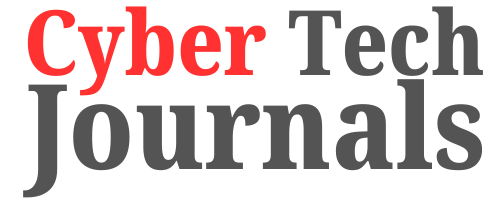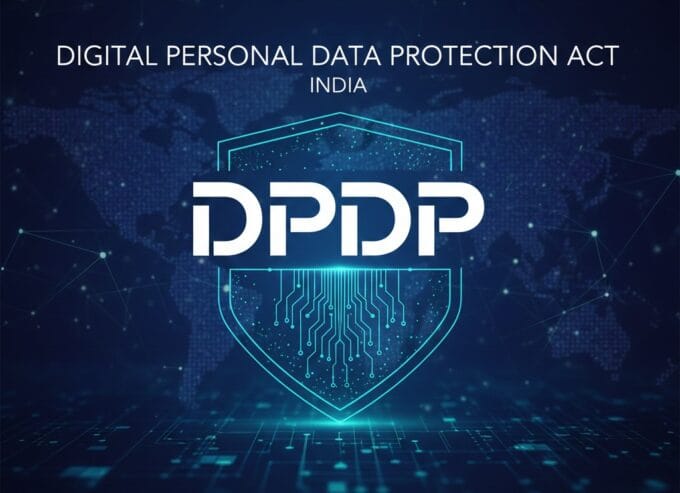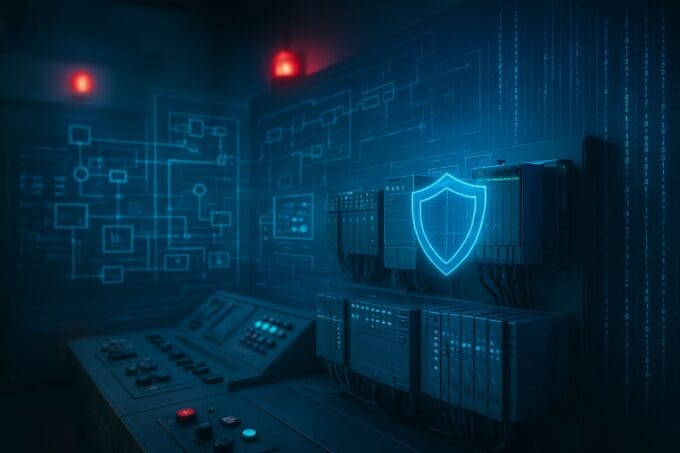The industrial landscape is undergoing a digital transformation that’s reshaping how we think about cybersecurity. As Chief Information Security Officers extend their purview beyond traditional IT environments into Operational Technology (OT) and Industrial Control Systems (ICS), the concept of cyber resilience takes on new dimensions that go far beyond perimeter defenses.
Recent industry analysis reveals that 75% of industrial organizations have experienced at least one cybersecurity incident in their OT environments within the past two years. Yet traditional cybersecurity approaches—built for IT environments—often fall short when applied to industrial systems where availability trumps confidentiality, and a five-minute outage can cost millions in lost production.
For CISOs tasked with protecting increasingly connected industrial environments, ICS cyber resilience represents a fundamental shift from reactive security to proactive business continuity. This comprehensive guide provides the strategic framework, regulatory insights, and practical methodologies needed to build robust ICS cyber resilience programs that protect both digital assets and operational continuity.
Table of Contents
Understanding the ICS Cyber Resilience Imperative
Industrial Control Systems cyber resilience differs fundamentally from traditional IT cyber resilience. Where IT systems prioritize data confidentiality and integrity, ICS environments place availability at the forefront—a single point of failure can halt production lines, disrupt power grids, or compromise public safety infrastructure.
The challenge becomes more complex when considering the convergence of IT and OT networks. Modern industrial environments no longer operate in isolation; they’re interconnected ecosystems where corporate networks interface with production systems, creating expanded attack surfaces that require sophisticated security strategies.
The Cost of ICS Cyber Incidents
Industry research demonstrates the significant financial impact of ICS-targeted cyberattacks. The average cost of an industrial cyber incident has risen to $4.8 million, with manufacturing organizations experiencing the highest costs due to extended downtime and production losses. These figures underscore why traditional cybersecurity approaches—focused primarily on data protection—are insufficient for industrial environments where operational continuity directly impacts revenue and safety.
The Colonial Pipeline incident serves as a stark reminder of how cyber threats can cascade beyond individual organizations to affect entire supply chains and national infrastructure. This event highlighted the need for comprehensive cyber resilience strategies that consider not just immediate technical impacts, but broader business continuity and societal implications.
The IT/OT Convergence Challenge
The integration of Information Technology and Operational Technology presents unique security challenges that require specialized approaches to cyber resilience planning. Unlike traditional IT environments where security patches can be applied during maintenance windows, industrial systems often operate continuously, making traditional vulnerability management practices impractical.
Architectural Differences That Matter
Understanding the fundamental differences between IT and OT architectures is crucial for developing effective ICS security strategies. IT systems are designed with layered security models where multiple defensive measures protect valuable data. OT systems, conversely, prioritize real-time control and monitoring, often with legacy protocols that lack built-in security features.
These architectural differences create integration challenges when organizations attempt to apply IT security frameworks directly to industrial environments. Successful ICS cyber resilience requires hybrid approaches that respect the operational requirements of industrial systems while providing adequate security controls.
Protocol and Communication Challenges
Industrial protocols like Modbus, DNP3, and Ethernet/IP were developed decades ago with minimal security considerations. As these systems become networked and integrated with corporate IT infrastructure, they introduce vulnerabilities that traditional security tools aren’t designed to address.
Modern ICS cyber resilience strategies must account for these protocol-specific risks while maintaining the real-time communication requirements essential for industrial operations. This often requires specialized security solutions designed specifically for industrial environments.
Navigating the Regulatory Framework Landscape
CISOs operating in industrial sectors must navigate complex regulatory requirements that vary by industry and geographic region. Understanding these frameworks is essential for building comprehensive risk assessment processes and ensuring regulatory compliance while maintaining operational efficiency.
NERC CIP: Critical Infrastructure Protection Standards
For organizations in the North American electric sector, NERC CIP (North American Electric Reliability Corporation Critical Infrastructure Protection) standards provide mandatory cybersecurity requirements. These standards establish minimum security controls for bulk electric systems, including asset identification, security management controls, personnel and training requirements, electronic security perimeters, physical security, and incident reporting.
NERC CIP compliance requires organizations to maintain detailed asset inventories, implement access controls, and establish monitoring capabilities. Recent audit findings indicate that organizations struggle most with maintaining accurate asset inventories in dynamic industrial environments and establishing effective monitoring for industrial protocols.
The regulatory framework emphasizes continuous monitoring and improvement, requiring organizations to regularly assess their cybersecurity posture and adapt to emerging threats. This aligns closely with cyber resilience principles that prioritize adaptive security measures and continuous improvement.
IEC 62443: Industrial Communication Networks Cybersecurity
IEC 62443 provides a comprehensive framework for industrial automation and control systems security. Unlike prescriptive regulatory requirements, IEC 62443 offers a flexible approach that allows organizations to tailor security measures to their specific operational requirements and risk profiles.
The standard introduces the concept of Security Levels (SLs) that correspond to different threat scenarios and required protective measures. This risk-based approach enables organizations to implement appropriate security controls without over-engineering solutions that might interfere with operational requirements.
IEC 62443’s zone and conduit model provides a structured approach to network segmentation that’s particularly relevant for ICS cyber resilience planning. By defining security zones with different risk levels and controlling communications between zones, organizations can limit the potential impact of security incidents while maintaining operational flexibility.
NIST Cybersecurity Framework in Industrial Contexts
The NIST Cybersecurity Framework’s five core functions—Identify, Protect, Detect, Respond, and Recover—provide a technology-neutral approach to cybersecurity that’s applicable across industrial sectors. NIST Special Publication 800-82 specifically addresses ICS security, providing guidance for applying the framework in operational technology environments.
The framework’s emphasis on risk management and continuous improvement aligns well with ICS cyber resilience principles. Its voluntary nature allows organizations to adapt requirements to their specific operational contexts while maintaining compatibility with other regulatory frameworks.
Recent updates to NIST guidance emphasize the importance of supply chain risk management, which is particularly relevant for industrial organizations that rely on complex vendor ecosystems for control system components and maintenance services.
Building Your ICS Cyber Resilience Strategy
Effective ICS cyber resilience strategies integrate technical security measures with business continuity planning and organizational change management. This holistic approach ensures that cybersecurity investments support broader business objectives while protecting critical operational assets.
Foundational Principles for ICS Cyber Resilience
Successful ICS cyber resilience programs are built on several foundational principles that distinguish them from traditional IT security approaches:
Operational Continuity First: While traditional cybersecurity prioritizes data confidentiality, ICS cyber resilience places operational continuity at the forefront. Security measures must support, not hinder, critical business processes.
Risk-Based Decision Making: Given the diversity of industrial environments, organizations must tailor security measures to their specific risk profiles rather than applying one-size-fits-all solutions.
Defense in Depth with Operational Awareness: Layer security controls while considering the operational impact of each measure. This includes understanding how security measures might affect real-time system performance and operator workflows.
Continuous Monitoring and Adaptation: Industrial threats evolve rapidly, requiring organizations to maintain situational awareness and adapt security measures accordingly.
Strategic Planning Framework
Developing an ICS cyber resilience strategy requires systematic planning that considers both technical and business requirements. The following framework provides a structured approach for CISOs developing comprehensive programs:
Phase 1: Asset Discovery and Classification Begin with comprehensive asset discovery that includes not just IT assets, but also OT devices, industrial networks, and supporting infrastructure. Many organizations are surprised to discover the extent of their industrial attack surface once they conduct thorough asset inventories.
Asset classification should consider both cybersecurity and operational criticality. A device that seems insignificant from a traditional IT perspective might be critical for production operations, requiring special security considerations.
Phase 2: Threat Landscape Analysis Industrial threat landscapes differ significantly from traditional IT environments. Nation-state actors increasingly target industrial infrastructure, while cybercriminal groups develop specialized capabilities for attacking industrial systems.
Understanding threat actor motivations and capabilities helps organizations prioritize security investments and develop appropriate defensive measures. This includes analyzing both external threats and potential insider risks specific to industrial environments.
Phase 3: Risk Assessment and Impact Analysis Traditional risk assessment methodologies often inadequately address operational technology risks. Effective ICS risk assessment considers not just the likelihood and impact of security incidents, but also the operational dependencies and cascading effects unique to industrial environments.
Impact analysis should extend beyond immediate technical effects to consider broader business and societal implications. This is particularly important for critical infrastructure organizations where security incidents can affect public safety and economic stability.
Comprehensive Risk Assessment Methodology
Risk assessment in industrial environments requires specialized methodologies that account for the unique characteristics of operational technology and the potential for cascading impacts across interconnected systems.
Multi-Dimensional Risk Analysis
Effective ICS risk assessment considers multiple dimensions that traditional IT risk assessment might overlook:
Operational Impact Assessment: Evaluate how potential security incidents might affect production processes, safety systems, and regulatory compliance. This includes understanding the operational dependencies between different systems and the potential for cascading failures.
Safety Risk Evaluation: Industrial systems often include safety-critical components where cybersecurity incidents could pose physical risks. Risk assessment must consider both cybersecurity and functional safety implications.
Business Continuity Impact: Assess how security incidents might affect broader business operations, including supply chain relationships, customer commitments, and financial performance.
Regulatory and Compliance Risks: Consider how security incidents might affect regulatory compliance and the potential for regulatory enforcement actions or penalties.
Threat Modeling for Industrial Environments
Industrial threat modeling requires understanding both cyber and physical attack vectors. Attackers might target industrial systems through traditional IT networks, but they might also attempt physical access to industrial facilities or target supply chain partners.
Effective threat modeling considers the attacker’s perspective, including their potential motivations (financial gain, espionage, sabotage) and capabilities (script kiddies vs. sophisticated nation-state actors). This analysis helps organizations prioritize security investments and develop appropriate defensive measures.
The threat landscape for industrial systems is rapidly evolving, with attackers developing increasingly sophisticated capabilities for targeting operational technology. Organizations must maintain awareness of emerging threats and adapt their defensive measures accordingly.
Vulnerability Management in OT Environments
Vulnerability management in operational technology environments presents unique challenges that require specialized approaches. Unlike IT systems where patches can be applied during scheduled maintenance windows, industrial systems often operate continuously, making traditional patch management practices impractical.
Effective OT vulnerability management requires risk-based prioritization that considers both the severity of vulnerabilities and the operational impact of remediation activities. This might involve developing compensating controls for critical vulnerabilities that can’t be immediately patched.
Organizations should also consider the supply chain implications of vulnerability management. Many industrial systems rely on third-party components and services, requiring coordination with vendors and service providers for effective vulnerability remediation.
Business Continuity Planning for Industrial Environments
Business continuity planning in industrial environments must account for the unique characteristics of operational technology and the potential for extended recovery times following security incidents.
Operational Recovery Strategies
Industrial systems recovery differs significantly from traditional IT disaster recovery. While IT systems can often be restored from backups, industrial systems require careful synchronization with physical processes and safety systems.
Recovery planning must consider the interdependencies between different industrial systems and the sequence required for safe restart procedures. This often involves coordination between cybersecurity teams, operations personnel, and safety engineers.
Organizations should develop multiple recovery scenarios that account for different types and severities of security incidents. This includes planning for scenarios where systems might need to operate in degraded modes while full capabilities are restored.
Supply Chain Continuity
Modern industrial operations depend on complex supply chains that can be disrupted by cybersecurity incidents affecting suppliers or service providers. Business continuity planning must consider these external dependencies and develop strategies for maintaining operations when supply chain partners are affected by security incidents.
This might involve identifying alternative suppliers, maintaining strategic inventory reserves, or developing capabilities to temporarily modify production processes. The goal is maintaining operational continuity even when external partners are temporarily unavailable.
Stakeholder Communication Planning
Security incidents in industrial environments often have broad stakeholder implications, requiring carefully planned communication strategies. Stakeholders might include employees, customers, suppliers, regulators, and the general public.
Communication planning should consider different scenarios and the appropriate messaging for each stakeholder group. This includes understanding regulatory notification requirements and coordinating with public relations and legal teams.
Implementation Roadmap and Executive Presentation Framework
Successful ICS cyber resilience programs require sustained executive support and adequate resource allocation. CISOs must be able to articulate the business value of cybersecurity investments and demonstrate progress toward strategic objectives.
Phased Implementation Approach
Implementing comprehensive ICS cyber resilience programs requires a phased approach that balances security improvements with operational continuity:
Phase 1: Foundation Building (Months 1-6) Establish basic security hygiene and situational awareness capabilities. This includes asset discovery, network segmentation, and basic monitoring capabilities. Focus on quick wins that improve security posture without disrupting operations.
Phase 2: Enhanced Protection (Months 7-18) Implement more sophisticated security controls and monitoring capabilities. This might include advanced threat detection, incident response capabilities, and enhanced access controls. Continue building organizational capabilities through training and process development.
Phase 3: Advanced Resilience (Months 19+) Develop advanced capabilities including threat hunting, predictive analytics, and automated response capabilities. Focus on continuous improvement and adaptation to emerging threats.
Measuring and Communicating Progress
Effective ICS cyber resilience programs require metrics that demonstrate both security improvements and business value. Traditional cybersecurity metrics might not adequately capture the operational benefits of industrial security investments.
Key performance indicators should include operational metrics (system availability, production efficiency) alongside traditional security metrics (incidents detected, time to resolution). This demonstrates the business value of cybersecurity investments and builds continued executive support.
Regular reporting should highlight both achievements and areas for continued improvement. This includes updating risk assessments as the threat landscape evolves and operational environments change.
Executive Presentation Framework
When presenting ICS cyber resilience initiatives to executive leadership, focus on business outcomes rather than technical details:
Business Risk Context: Frame cybersecurity investments in terms of business risk reduction and operational continuity protection. Use relevant industry examples to illustrate potential impacts.
Regulatory Compliance: Highlight how cybersecurity investments support regulatory compliance and reduce the risk of enforcement actions or penalties.
Competitive Advantage: Position cybersecurity capabilities as enablers of digital transformation and competitive differentiation rather than just cost centers.
Investment Justification: Provide clear business cases that demonstrate return on investment through risk reduction, operational efficiency improvements, and regulatory compliance benefits.
Building Organizational Capabilities
Sustainable ICS cyber resilience requires building organizational capabilities that extend beyond technical security measures. This includes developing human resources, establishing governance structures, and creating a culture of security awareness.
Skills Development and Training
Industrial cybersecurity requires specialized skills that combine traditional cybersecurity knowledge with operational technology expertise. Organizations must invest in training and development programs that build these hybrid capabilities.
| Skill Category | IT Security Skills | OT Knowledge Required | Training Approach | Development Timeline |
|---|---|---|---|---|
| Network Security | Firewalls, IDS/IPS | Industrial protocols, real-time requirements | Cross-training programs | 6-12 months |
| Incident Response | Forensics, containment | Safety systems, operational impact | Tabletop exercises | 3-6 months |
| Risk Assessment | Threat modeling, vulnerability assessment | Process safety, business continuity | Mentorship programs | 12-18 months |
| Architecture Design | Network design, segmentation | Control system architecture | Vendor partnerships | 18-24 months |
| Compliance Management | Audit processes, documentation | Industry regulations | Certification programs | 6-12 months |
Training programs should address both technical skills and soft skills, including communication and collaboration capabilities that enable effective coordination between IT, OT, and business teams.
“The biggest talent gap in industrial cybersecurity isn’t just technical knowledge, it’s finding people who can speak both languages, who understand both the cyber threats and the operational consequences.”
Consider partnering with educational institutions and professional organizations to develop sustainable talent pipelines for industrial cybersecurity roles.
Governance and Organizational Structure
Effective ICS cyber resilience requires governance structures that enable coordination between IT, OT, and business teams while maintaining clear accountability and decision-making authority.
This might involve establishing cross-functional teams, defining roles and responsibilities, and creating communication channels that enable effective collaboration.
Governance structures should be designed to support rapid decision-making during security incidents while maintaining appropriate oversight and control during normal operations.
Future-Proofing Your ICS Cyber Resilience Strategy
The industrial cybersecurity landscape continues to evolve rapidly, driven by technological advances, emerging threats, and changing regulatory requirements. Successful organizations build adaptive capabilities that enable them to respond to these changes while maintaining operational continuity.
| Emerging Technology | Cybersecurity Implications | Implementation Considerations | Risk Mitigation Strategies |
|---|---|---|---|
| AI/ML in OT | New attack vectors, autonomous threats | Model security, data integrity | Secure development, monitoring |
| Edge Computing | Distributed attack surface | Remote management, updates | Zero-trust architecture |
| 5G Industrial | Network slice security | Carrier dependencies | Network segmentation |
| Digital Twins | Virtual-physical convergence | Model accuracy, access control | Simulation security |
| Cloud-Connected OT | Expanded connectivity risks | Latency requirements, availability | Hybrid architectures |
Emerging Technology Considerations
Technologies like artificial intelligence, machine learning, and edge computing are increasingly being deployed in industrial environments. These technologies offer significant operational benefits but also introduce new cybersecurity considerations that must be addressed in resilience planning.
“The convergence of IT, OT, and IoT is creating unprecedented complexity in industrial environments. CISOs need to think beyond traditional network security to address the full spectrum of cyber-physical risks.”
Organizations should develop capabilities to evaluate and integrate new technologies while maintaining security and operational continuity. This includes establishing processes for technology risk assessment and security requirements development.
Continuous Improvement and Adaptation
Effective ICS cyber resilience requires continuous monitoring of the threat landscape and regular updates to security measures and response procedures. This includes staying informed about emerging threats, regulatory changes, and industry best practices.
Organizations should establish processes for regular review and update of their cyber resilience strategies, incorporating lessons learned from their own experiences and industry-wide developments.
Conclusion: Beyond Compliance to True Resilience
ICS cyber resilience represents a fundamental shift from traditional cybersecurity approaches focused on perimeter defense to comprehensive strategies that prioritize operational continuity and business resilience. For CISOs extending their responsibilities into operational technology environments, this requires developing new capabilities, building cross-functional relationships, and demonstrating business value through risk reduction and operational efficiency improvements.
The integration of IT and OT environments will continue to accelerate, driven by digital transformation initiatives and competitive pressures. Organizations that develop robust ICS cyber resilience capabilities today will be better positioned to capitalize on these opportunities while managing associated risks.
Success requires sustained commitment from executive leadership, adequate resource allocation, and ongoing investment in organizational capabilities. The organizations that view ICS cyber resilience as a strategic capability rather than a compliance requirement will be best positioned to thrive in an increasingly connected and threat-rich environment.
The journey toward comprehensive ICS cyber resilience is complex and challenging, but the organizations that commit to this path will develop competitive advantages that extend far beyond cybersecurity. They will build operational resilience that supports growth, innovation, and long-term sustainability in an increasingly digital industrial landscape.
By implementing the frameworks and methodologies outlined in this guide, CISOs can build ICS cyber resilience programs that protect critical assets while enabling digital transformation and business growth. The key is starting with a clear understanding of your organization’s unique risk profile and building adaptive capabilities that can evolve with changing threats and business requirements.
Remember that ICS cyber resilience is not a destination but a journey of continuous improvement and adaptation. The organizations that embrace this mindset and commit to building comprehensive capabilities will be best positioned to succeed in our increasingly connected industrial future.














Leave a comment